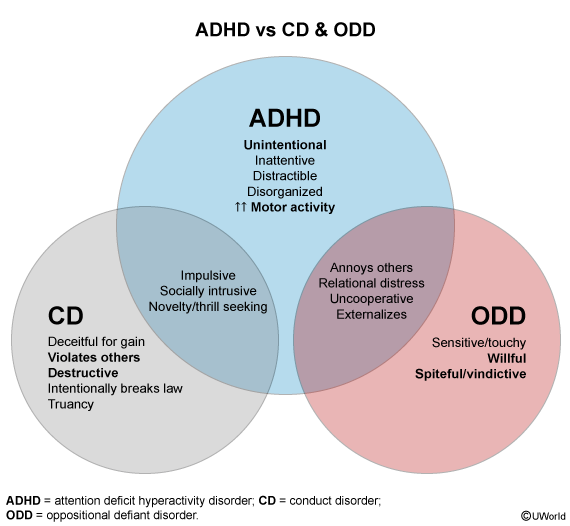Attention Deficit Hyperactivity Disorder
Article Sections
Introduction
Attention deficit hyperactivity disorder (ADHD) is a neurodevelopmental disorder that begins in childhood and is characterized by a chronic, persistent pattern of inattention, hyperactivity, and impulsivity. Symptoms can impair social, academic, and occupational functioning throughout childhood and can persist into adulthood in many cases.
Epidemiology
ADHD is one of the most common psychiatric conditions in children. The worldwide prevalence of ADHD is estimated to be 7% among children and 2.5% among adults.
Pathogenesis
Dysfunction in the dopaminergic and noradrenergic pathways is thought to play a key role in the symptoms of ADHD. The brain regions most affected include the prefrontal cortex and basal ganglia, which are associated with executive function, attention, and motor control.
Risk factors
Several risk factors, particularly those impacting early development, contribute to the etiology of ADHD. There is a strong genetic predisposition, with heritability of ADHD being approximately 70-80%. Exposure to tobacco and alcohol in utero significantly increases the risk for ADHD. Prematurity and low birth weight are also associated with ADHD. Lead exposure, CNS infections, and head trauma during the early developmental period may also increase the risk for ADHD.
Continue Learning with UWorld
Get the full Attention Deficit Hyperactivity Disorder article plus rich visuals, real-world cases, and in-depth insights from medical experts, all available through the UWorld Medical Library.
Figures
